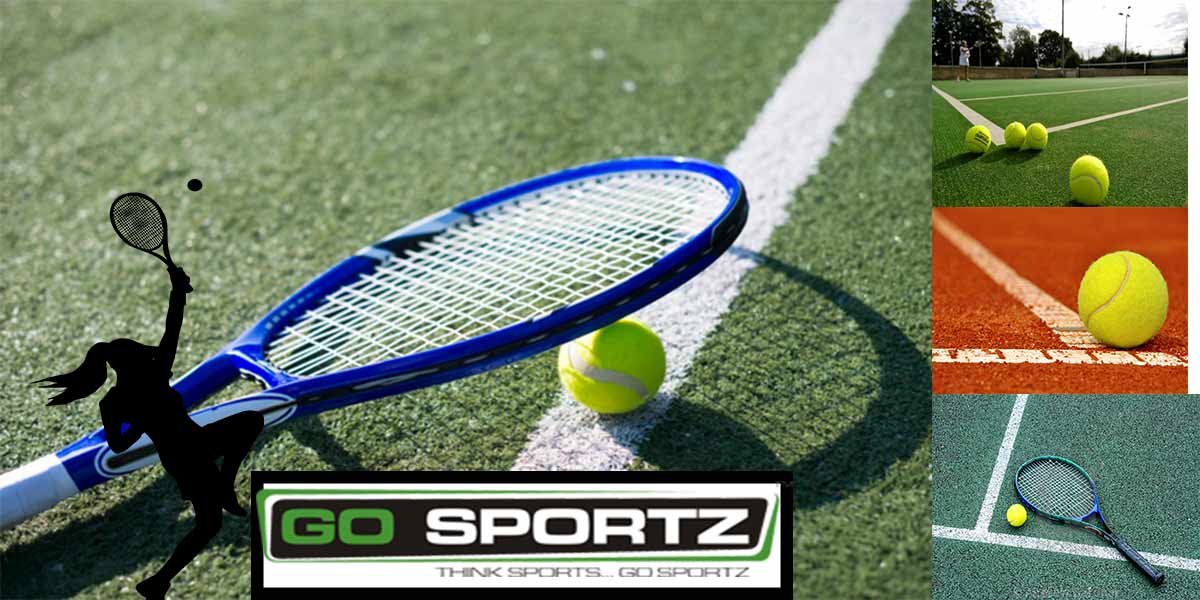All About Tennis Court Surfaces (Flooring)
- by Admin
- January 10, 2020

Tennis must be a favourite game of many of you out there. No matter what your age is, you can enjoy it indoors as well as outdoors. Since tennis is one of the best way of leading a healthy life, you should opt for this game, if you haven't yet started.
But before you make the choice, it is essential to have some knowledge about the types of tennis court surface. It is the most important criterion that enables easy bouncing of the tennis ball. Besides, an ideal tennis court surface for outdoor/indoor acts as a good shock absorber in case a player falls down.
To define it, a tennis court flooring is a rectangular area with a stretch of low net across the centre. Singles and doubles matches can be played on the surface which can be of various types. Each flooring has varying characteristics and has a major impact on the playing style. So let us move on to explore different types one by one.
Types of Tennis Court Flooring
There are basically 4 types of tennis court surface both for outdoor and indoor environments. But the choice depends on which one suits your requirements. The list given ahead will help you make the decision.
1. Grass Court
This was the most commonly used tennis court surface. The natural grass is grown on a layer of soil that is hard-packed. Bounce on this flooring depends on the healthy state of the grass. Other factors that could affect the bounce include the frequency at which the grass is mown and the degree of wear and tear. Owing to its softness and natural characteristics, it is the best surface for the human body. The serve-and-volley tennis players find the grass courts favourable.
Nevertheless, there may be certain downsides to this tennis court flooring. You can find that the grass season is very short and their maintenance cost is high. The major issue is during the rainy season when they don't dry up easily. This is especially true when it comes to tennis court surface in the outdoor environment.
2. Clay Court
Crushed stone, shale or brick is used for making the clay courts. Such a tennis court flooring retards the speed of the tennis ball with a high bounce. Thus, it doesn't have the benefits of big serves which might make it unfavourable for the servers. Though its construction cost is low, it comes with a high maintenance cost. This flooring requires careful monitoring of the water balance. Periodic rolling is also necessary for maintaining its flatness.
3. Hard Court
Materials that are uniform and rigid make the hard tennis court flooring. It provides better bounce consistency compared to other outdoor surfaces owing to the acrylic surface layer. You can find the speed to be varying in this type of flooring. Compared to clay, the speed is more but less than that on grass courts. The slowing down rate of the ball is affected by the amount of sand combined with the paint.
4. Carpet Court
Carpet tennis court flooring involves a removable court covering. Generally, rubber-backed court surfacing is installed temporarily for the tennis event. Compared to a hard court surface, this has a faster and lower bounce. If you play well as a tennis server, you will find this type beneficial.
Recent Posts
- All About Tennis Court Surfaces
- Importance of Nutrition for Sports People
- Exploring Indonesian Badminton
- History of badminton sport
- How to choose the perfect sports flooring surface for the right sports?
- Why not install a multi-use game area in your school?
- Badminton Girls - Absolutely, the Women of Substance
- Badminton Sport : Techniques and Fine Points

